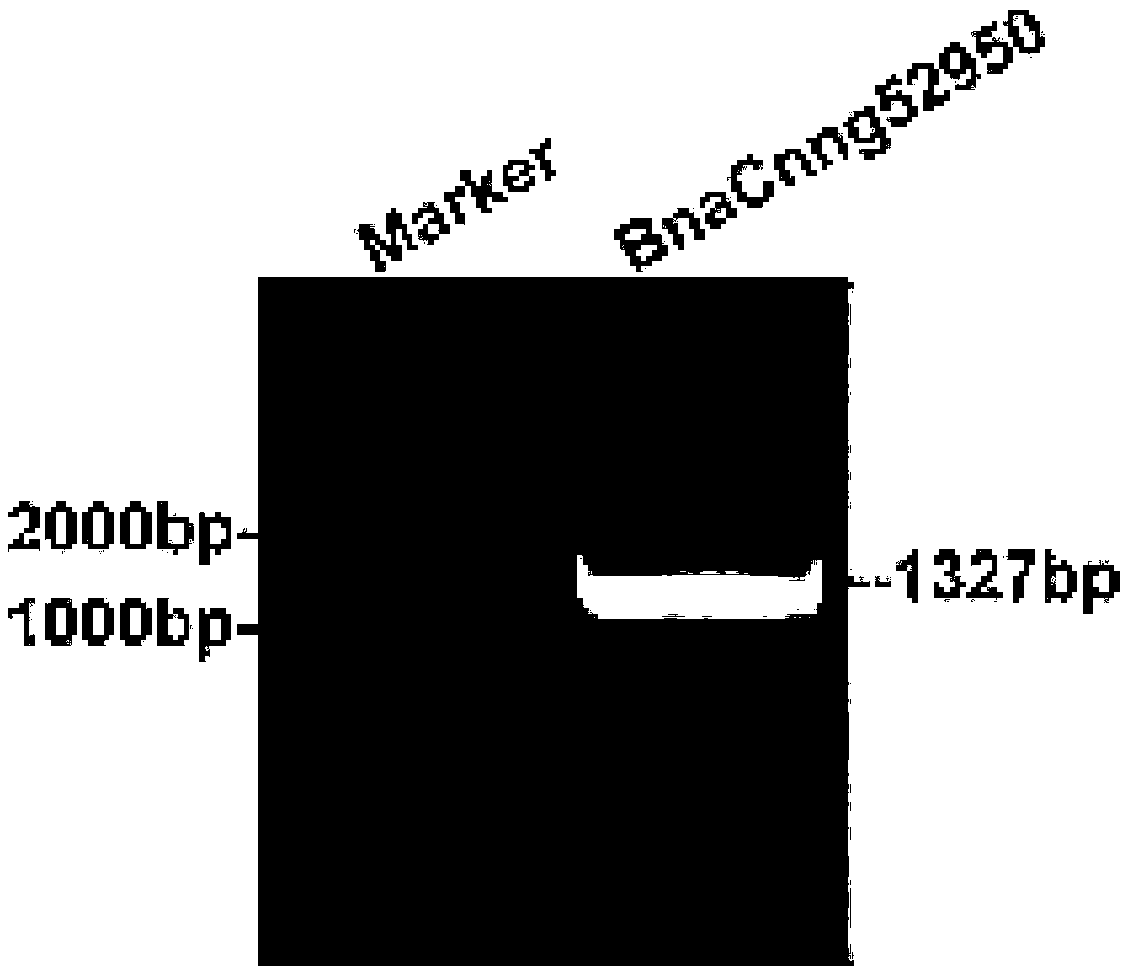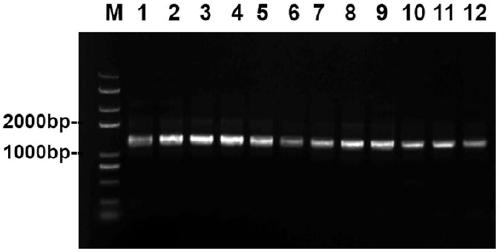Promoter sequence based on BnaCnng52950D gene, recombinant vector and application
A promoter and gene technology, applied in the fields of genetic engineering and molecular biology, can solve the problems of wasting energy, easily affecting the physiological metabolism of plants, adverse pleiotropic reactions, etc., and achieve the effect of increasing diversity
- Summary
- Abstract
- Description
- Claims
- Application Information
AI Technical Summary
Problems solved by technology
Method used
Image
Examples
Embodiment 1
[0041] Promoter sequence cloning
[0042] 1. In the early stage, the Brassica napus transcriptome data was used to screen the gene BnaCnng52950D with tissue-specific expression, and the upstream 1500bp promoter amplification primers PR and PF were designed according to the Brassica napus genome sequence.
[0043] 2. Using the genomic DNA of Brassica napus ZS11 as a template, use the Q5 high-fidelity enzyme of NEB Company in the United States to amplify. The PCR program is: 98°C pre-denaturation for 30s; 98°C denaturation for 10s; 56°C annealing for 20s; 35 cycles; the final incubation at 72°C for 2 minutes. The amplified products were detected by electrophoresis, and the electrophoresis results were observed in a gel imaging system. The fragments with the correct band size were recovered by using the gel recovery kit method to recover the target fragments.
[0044] 3. Mix 4 μl of the amplified PCR product with 1 μl of Salt Solution, take 2.5 μl into a new centrifuge tube, add...
Embodiment 2
[0046] Promoter Homeopathic Element Analysis
[0047] Using the PlantCARE database to analyze the cis-acting elements in the amplified sequence of the BnaCnng52950D gene promoter, the results showed that the Brassica napus BnaCnng52950D gene promoter contained a large number of core elements TATA-box and CAAT-box and many other important cis-acting elements, Including many light response-related regulatory elements, such as Box 4, GT1-motif and MRE, etc., there are also circadian cis-regulatory elements related to circadian rhythm control and cis-regulatory elements GCN4_motif involved in endosperm expression, as well as anaerobic-induced cis-regulatory factor etc.
[0048] Table 1 Cis-acting elements in the BnaCnng52950D promoter
[0049]
Embodiment 3
[0051] Construction of recombinant expression vectors
[0052] 1. Digest the plasmid pEntry-52950 with a combination of restriction endonucleases MluI to linearize the circular plasmid, which is beneficial to improve the efficiency of the LR reaction. Enzyme digestion system (50 μl): ddH2O, 14 μl; 10×NEB buffer 3.1, 5 μl; pEntry-52950 plasmid, 30 μl; MluI enzyme, 1 μl.
[0053] 2. After digestion for 30 minutes, perform LR recombination reaction between the linearized pEntry-52950 plasmid and the plant expression vector pEarly502, and recombine the BnaCnng52950D promoter sequence into the pEarly502 vector. LR recombination reaction system (6 μl): digested pEntry-52950, 3 μl; plant expression vector pEarly502, 2 μl; 5×LR Clonase Enzyme, 1 μl.
[0054] 3. After mixing the connection system, place it at room temperature for 4 minutes, add 0.5 μl proteinase K, and place it at 37°C for 10 minutes, then transfer it to Escherichia coli TOP10 competent, screen it on an LB plate con...
PUM
 Login to View More
Login to View More Abstract
Description
Claims
Application Information
 Login to View More
Login to View More - R&D
- Intellectual Property
- Life Sciences
- Materials
- Tech Scout
- Unparalleled Data Quality
- Higher Quality Content
- 60% Fewer Hallucinations
Browse by: Latest US Patents, China's latest patents, Technical Efficacy Thesaurus, Application Domain, Technology Topic, Popular Technical Reports.
© 2025 PatSnap. All rights reserved.Legal|Privacy policy|Modern Slavery Act Transparency Statement|Sitemap|About US| Contact US: help@patsnap.com



